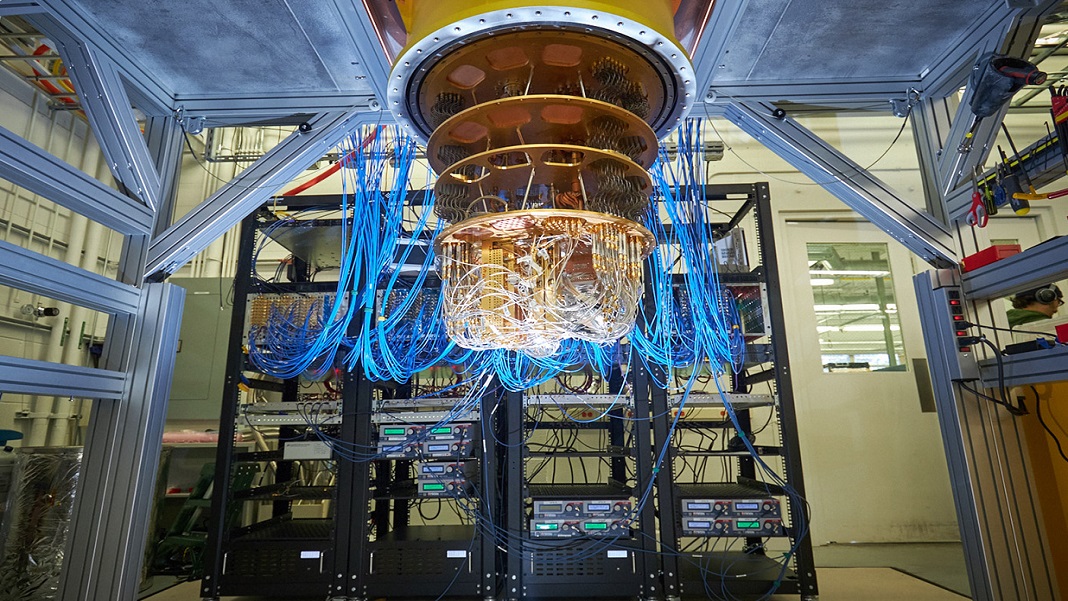
Imagine a future in which age becomes a health state.
Instead of simply answering the question, “How old are you?”, you’ll be able to say “I’m five years younger than when we last met!”
Age will no longer be our number one risk factor for developing debilitating diseases such as cancer and diabetes.
Aging is a highly personalized phenomenon and all of us seem to age at different rates. It’s also a disease—one that many scientists are beginning to believe can be slowed, stopped, and perhaps even reversed.
How do we get there? A key step is more accurately measuring aging itself—before we can improve it.
In today’s blog, we’ll first define aging, and then focus on four diagnostic methods of aging, known as the “-omics”:
-
Transcriptomics
-
Metabolomics
-
Proteomics
-
Epigenomics
Let’s dive in...
(This blog is written by Peter Diamandis, MD and Felicia Hsu, MD)
NOTE: Every year I take a small group of investors, philanthropists, and entrepreneurs on a “Platinum Longevity Trip” to experience first-hand the major players, scientists, companies, and treatments in vitality and longevity science. I’ve also made Longevity and Healthspan a key focus of my year-round coaching program Abundance360.
WHAT IS AGING?
Aging is the accumulation of damage––molecular disruptions in the structure of tissues and organs––leading eventually to impaired function and increased vulnerability to death.
This deterioration is the main risk factor for major diseases: from cancer and diabetes, to cardiovascular disorders and neurodegenerative diseases.
When most people think about aging, they focus on lifespan: the number of years a person will live.
But I don’t want to only increase our lifespan—I also want to increase our healthspan, the number of healthy years you will live.
What could you accomplish if you had an extra 30 healthy years?
Now, healthspan is a complicated concept because it needs biomarkers to quantify. Metabolites includes NAD, fasting glucose, cholesterol, and other markers of inflammation. Markers of physiological health are important, such as cognition, frailty, cardiovascular health, eye, and ear health. Halted cellular states––senescence––play a role too.
This gives rise to the need for universal measures—clocks—that distinguish and measure biological age in comparison to chronological age.
We want to minimize the gap between these numbers, and if possible, make your biological age younger than your chronicle age.
Let’s take a look at four methods researchers are using to try to “diagnose age.”
TRANSCRIPTOMICS
Do you remember the high school biology sequence: DNA → RNA → protein?
Transcriptomics examines the portion of your DNA that gets translated into RNA, and eventually, protein.
Researchers hoped that the “high-yield” part of your genome could be used to discern your biological age.
To test this, researchers took a group of people and used certain “transcripts” to classify young versus old subjects.
What did they find?
Well, it was hit or miss. Several markers such as IL-6, blood urea, and albumin were significantly different between the two groups. But other well-known markers didn’t show any correlation. Several of these markers are also incredibly vague.
And so, the search for a perfect age clock continues.
METABOLOMICS
The metabolomics is the profiling of small molecules or metabolites.
These small molecules give you a more complete picture of biological processes because they represent the intermediate and final products of metabolism in organs and tissues.
What is causing the burn in your muscles when you work out? It’s a metabolite, lactic acid.
For example, tripeptide CGT was shown to be a biomarker for age-associated decline in lung function and hip bone mineral density. Urine samples have been shown to predict age with good correlation to some of the known age-related biomarkers such as kidney function, hyperglycemia, and HbA1c levels.
Like with transcriptomics, there were a few problems with the studies:
-
Comparability and reproducibility because metabolites are easily affected by the environment.
-
Difficult to distinguish between metabolic disorders versus aging.
Next, we’ll cover more promising aging clocks.
PROTEOMICS
Proteomics is what it sounds like––the evaluation of proteins in your blood.
Different proteins in the blood have specific half-lives (how long they remain in circulation) and as you age, they undergo chemical modifications, such as glycosylation.
These modifications are responsive to inflammation and aging. The more “aged” you are, the more glycosylation you’ll see.
Researchers at Stanford School of Medicine undertook a different massive proteomics project. They took blood from 4,200 healthy individuals between 18 and 95 years old.
They then used their findings to create a clock that could accurately predict the chronological age of an additional 1,500 people, using just 373 proteins.
People initially questioned the validity of their study. For instance, don’t men and women age differently? Our protein composition makeup must be wildly different too. It turns out, about two-thirds of the proteins that change with age also differ between the sexes. So, the proteomic clock could still accurately predict the ages in all people.
The implications for this are enormous. Aside from determining someone’s biological age, proteomics could provide a window to select and implement changes in a personalized manner.
EPIGENETIC CLOCKS
One of the newest breakthroughs in the field of aging has been the study of methylated sites of DNA to determine someone’s epigenetic biological age. DNA methylation, the process by which methyl groups are added to the DNA molecule, is a side effect of aging, both naturally and from environmental and life stressors.
It is the superior biomarker to measure epigenetic biological age.
This was first proposed by Steve Horvath, who coined the term “Horvath Clock.” It’s gone on to fuel real-world applications, including forensic studies (think latest CSI tech for determining the age of an unknown person from a blood sample). These epigenetic clocks have captured the imagination of aging researchers, policymakers, and industry sectors as a lot of work has gone into studying these in the past eight years.
And the success of the “Horvath Clock” is startling. There is a high correlation of the clock with someone’s chronological age with very small error––3.6 years to be exact.
These clocks can predict all-cause mortality independent of risk factors such as physical activity, smoking, and body mass index. A one-year increase in epigenetic age was associated with a 6% increase in developing cancer in the next three years and a 17% increase in the risk of dying of cancer in the next five years.
A high degree of correlation has been shown with the diseases of aging. For example, an acceleration of Horvath’s clock was shown to correlate with increased plaques, global cognitive decline, and episodic and working memory decline in Alzheimer’s patients.
The beauty of epigenetic clocks is that they can also highlight whether certain behaviors or treatments have an impact on epigenetic age.
For example, unhealthy behaviors like smoking and poor diet can accelerate your epigenetic or biological age, and healthy behaviors like exercise and certain therapeutic approaches can slow or potentially reverse the epigenetic aging process.
This opens an entire field of innovation: to be able to track your progress in impacting your age and lifespan.
FINAL THOUGHTS
Aging is a complex phenomenon that differs from person to person. This makes it incredibly challenging and difficult to model.
However, its importance remains as high as ever. Are you sick of hearing, “I’m getting old.” as a catch-all for joint pain, fatigue, and the onset of more chronic diseases?
We’re already seeing breakthroughs in being able to measure age. So far, epigenetic clocks are leading the charge.
We’ve now uncovered methods for measuring our biological age. The implications of these kinds of technologies will establish a critical first step towards reversing our age, and increasing our healthspan.
We will live longer, healthier lives and continue to contribute years beyond what we previously thought was possible.
My mission is to transform the way you think––to transform your mindset around many factors including longevity.
What will you achieve with an extra 30 healthy years?
JOIN MY LONGEVITY PLATINUM TRIP
Platinum Longevity & Immunology Trip: On September 22-26, 2021, I'm taking a group of VIP entrepreneurs and investors on what I call my “Platinum Longevity & Immunology Trip” to Boston, MA and New York, NY.
The Trip will be a 5-Star (luxury) deep dive to meet 20+ companies, 12+ academic labs / research institutes, and 28+ scientists / physicians and entrepreneurs who are leading the charge against age-related diseases and extending the human healthspan.
My mission is to give you first-hand exposure to the major players, scientists, companies and treatments in the longevity and vitality arena. All your questions answered. Early access to cutting-edge treatments and products. And a behind-the scenes view of tomorrow’s longevity revolution.
The trip is nearly sold out. To learn more and lock in your seat, check out our website and sign up here!
JOIN MY ABUNDANCE360 COMMUNITY
If you want my coaching as an exponential entrepreneur and to reinforce those mindsets that will inspire and guide you to create a hopeful, compelling and abundant future for yourself and humanity, then consider joining my year-round Abundance360 coaching program and come to our in-person A360 Summit February 2-4, 2022.
Every year, my team and I select a group of 360 entrepreneurs and CEOs to coach over the course of a year-long program. You can join at any time for a full year’s worth of personal coaching on Exponential Tech, Longevity, Moonshots, and Abundance thinking and a mix of in-person and virtual content.
My mission is to help A360 members obtain mastery in four specific mindsets: an Abundance Mindset; an Exponential Mindset; a Longevity Mindset; and a Moonshot Mindset. Together we will actively select and reinforce your preferred Mindsets.
Topics: Education Abundance AR/VR Entrepreneurship Exponentials Medicine/Health Longevity Abundance 360







